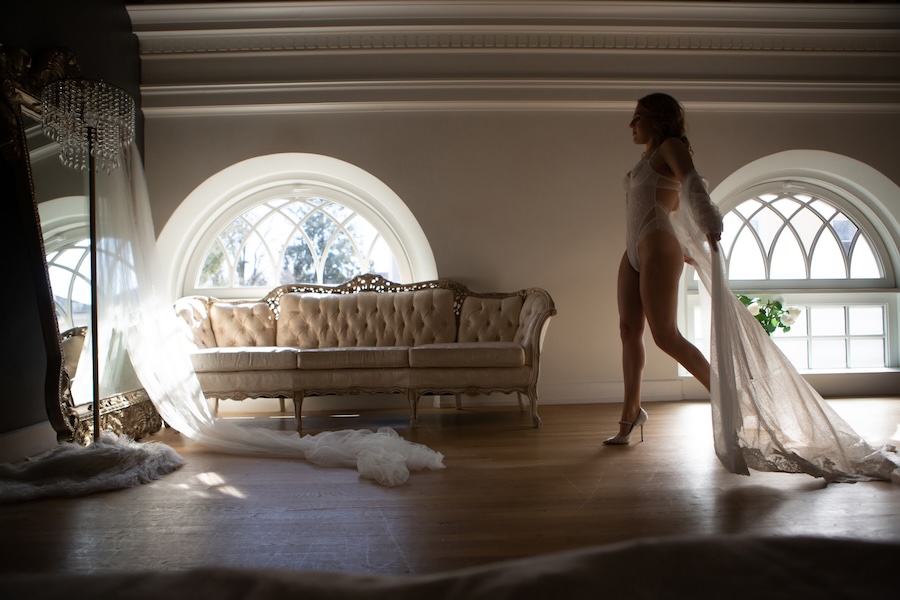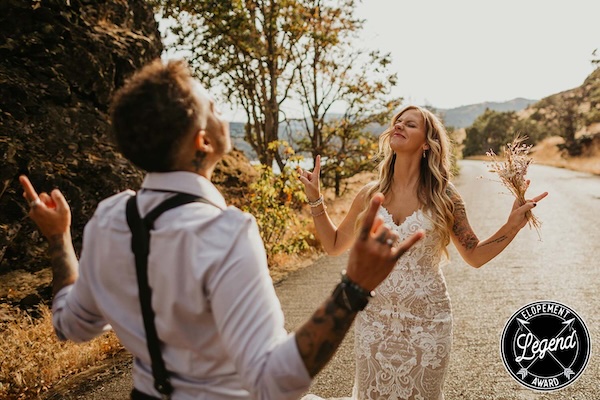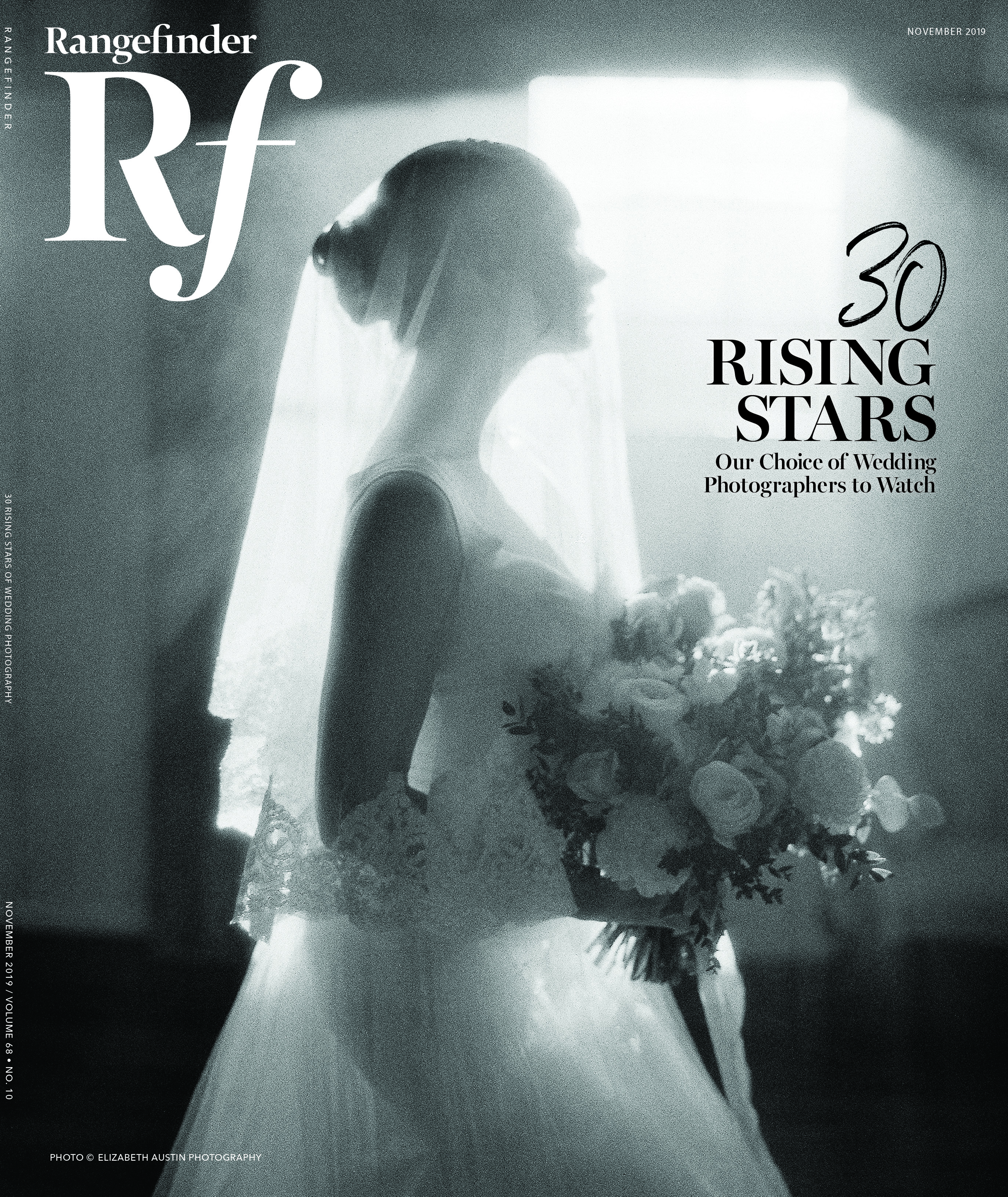Trumping the Work of the Devil
April 1, 2009
Landscape photography? Piece of cake. No bullets to dodge,
no wild beasts to track, no prima donnas to deal with, no security heavies leaning on you–just a nice hike to shoot a few frames of beautiful, uncomplaining subjects and then home in time for drinks and dinner. What a way to make a living!
Isle of Lewis, Outer Hebrides Islands, Scotland, 2004. After a dreary six-hour-plus ferry trip from the mainland to photograph the prehistoric Standing Stones at Callanish, British landscape photographer Steve Walton lugged his gear in a wicked rain to an ancient, stone-walled, thatched-roof blackhouse he rented for a week. From there he watched the weather turn from bad to worse each interminable day.
“The rain continued for five days without stopping,” the then-50-year-old Walton recalls. “Finally, the forecast for the sixth day was better so I left at 3 a.m. to reach the site at sunrise.” Though nearly sidetracked by the call of a corncrake (Walton’s an avid birder) he trudged on “to do what I was there for and had waited so long for in great frustration.”
He wasn’t disappointed. “Shortly after I set up the camera I was greeted by the most incredible sunrise I had ever seen. It was what any landscape photographer dreams about, a massive, silent explosion of color so vivid it seemed to make a loud noise as it appeared. Absolutely fantastic! In the very few minutes I had available as the sun rose higher, I filled my boots with images, running all over the site to get as much as I could before the
scene disappeared.”
One of the images of the 4000-year-old stones resulted in Walton being named 2004 U.K. Landscape and Travel Photographer of the Year at the annual British Professional Photography Awards. In fact, many of the images he shot that morning have been best sellers and one, “Callanish Sunrise,” a limited edition of 25 currently priced at £1725 (roughly $2420), will have the original destroyed after it sells out—which should make it extraordinarily valuable in the future.
British Professional Awards Banquet, Newcastle Hilton, England, 2007. It has been an interesting three years for Walton since Callanish, one in which he was only the second photographer in the history of the Master Photographers Association to be advanced from Licentiate to Fellowship without going through the intermediate step of Associateship. His work has been compared to that of Ansel Adams. Now, at this black-tie awards affair, as he finished his special vegetarian dinner followed by coffee and cognac, he wondered if he would once again receive the coveted award as he has done twice before in 2004 and 2006. At last, the Landscape category is announced and the finalists’ images are displayed on large screens.
“Three images out of the four in the final were mine,” he remembers. “The image from the other photographer was the second and my heart was in my mouth, it was a very strong image. There was an agonizing delay before the winner was announced. I can remember cheers and applause from around the room as my name was called and, following that, the walk between the tables to the stage.”
Walton came late to photography. After his schooling he took an apprenticeship in reprographics and prepress, ending up as a senior repro manager for a large specialized packaging printing company. “Although I had long held an ambition to become a full-time photographer and had realized that there is much more to creating a worthwhile landscape image than simply going for a walk and randomly pointing the camera at things, it was not until my mid 40s before I was able to follow my passion.”
At his website, large capital letters proclaim: “I am a photographer. I make images of many things: people, places, architecture and landscape. Once I did it because it fascinated me. Now I make my living by creating images. The fascination has become an obsession. The obsession is to master the art. My love for the outdoors began before the obsession. I became a kayaker, canoeist, hillwalker and a backpacker. I am fortunate. I indulge myself in love and obsession at the same time.”
But, like most landscape photographers, Walton is the first to acknowledge that it doesn’t pay the rent. For that, he’s in a partnership with photographer Julie Oswin and together they tackle commercial and wedding jobs where, as he puts it bluntly, “my typical day involves one percent taking photographs and 99 percent preparing images for print or transmission while dealing with client inquiries.” For commercial and stock shooting, Walton uses a Nikon D3 with a range of Nikkor lenses because, he acknowledges, “it would be almost impossible and prohibitively expensive to use film in our business now.”
Although he shoots a lot of color, black and white is his first love. “Black and white to me,” he says, almost reverently, “is imagemaking in a very pure form. The image becomes a symphony of light, shadow, texture and mood, which is unencumbered by colorful distractions. With landscapes, other factors come into play–highlight and shadow detail and an interesting sky with good cloud detail are crucial. We suffer in the U.K. by often having a uniform gray, blue or white sky. Without detail and interest in that area of the image, everything else is worthless.”
Walton keeps his landscape equipment simple, preferring mechanical cameras that use film so he can make very long exposures. He uses the 3:1 panoramic format a lot and shoots with three main cameras: a Fuji GX617 with 90mm, 180mm and 300mm lenses, a Fuji GSW690111 with a 65mm lens, and a Hasselblad XPan with 45mm and 90mm lenses. His light meter is a Seconic L-508 Zoom and a Manfrotto 486RCZ ball-and-socket head with a quick release plate sits atop a Manfrotto Carbon 440 tripod. A cable release is also de rigueur.
He has moved away from shooting with black-and-white emulsions (Ilford Delta 100 was his favorite, developed in ID11) and now uses Fuji Velvia 50 and 100 color transparency film. He says, “I prefer to work this way as it gives more options. I have both a color image file and a black-and-white RGB file and I can fine-tune either to obtain whatever result I want. Furthermore, there are no issues with grain when scanning.” When converting to black and white, Walton uses Imaging Factory’s Convert To Black and White Pro3, a Photoshop plug-in (which is no longer available).
Once shot, his images are scanned at high resolution on an Imacon scanner and then moved into the digital domain where he makes basic adjustments with levels and curves, crops, if necessary, sharpens, tones and sometimes enhances local areas such as the sky. “However, I have never doubled in a sky from a different image,” he says. “One of the benefits of working with my ‘hybrid’ film-to-digital workflow is that I can sometimes make two or more exposures of a scene and combine them in post-scan production.”
This technique also allows Walton to shoot without the use of graduated filters. “I can make an exposure for the sky and another for the landscape and simply combine the two after scanning. The ability to finely control the image in this way is infinitely better than using filters, recalculating exposures and then bracketing like mad in an attempt to create an image which will be only ‘almost’ acceptable.”
Some of what Walton goes through to capture his images confirms the obsession he speaks of at his site and shows his unwavering dedication to the art of the landscape:
“Although the weather was warm and sunny as I set off from the carpark in Brodick [Scotland], it deteriorated as I climbed higher. By the time I reached the summit, visibility was about four meters as the cloud closed in. I waited for about three hours for the cloud to lift but it did not lift entirely.
“When the sky is leaden and the rain and sleet are being driven by a cold easterly wind, Dartmoor takes on a different guise and is not to be taken lightly. I have been on the moor in June and have been caught in a snowstorm.
“The toughest physical experience has to be the Scottish Midge (insects which can reach densities of 10 million-per-acre and deliver 3000 bites an hour). They are the work of the Devil. You can barely see them, but they will find you instantly and descend greedily on any available bare flesh, eyes, ear, nostrils and mouth. The Scottish Midge is total perfection in abject torment and nothing short of dousing oneself in petrol and setting light to it will deter them.”
Back in the studio (and away from the Midges), Walton sometimes uses an Epson Pro-Portrait Gem printing system to output work, but “if I have used black-and-white negative film, I process it and then print it myself using an Epson Stylus Pro 4800 and a Hahnemühle heavy fine art rag paper.” He also uses an outside lab for high gloss digital fine art printing. “I like high gloss images because they are very different from what most other fine art photographers offer,” he explains.
Walton says it took a lot of searching but he finally found a lab that uses Ilford Ilfoflex high gloss digital paper, which is output on a Fuji Frontier printer. He points out that “since RA4 processing is used, both color and monochrome images can be printed.” Finally, for certain limited edition prints, Walton turns to a commercial gravure printing specialist who uses a filmsetter to make positives from the digital files and then produces conventional plates.
By now, it should be evident that landscape photography done right is not a piece of cake. Weather and insects notwithstanding, there are frequently other obstacles to surmount. One of Walton’s favorite reminiscences involves setting up a beach shot in Moeraki, New Zealand, which he had timed perfectly for the tide. “Just at the point of releasing the shutter,” he recalls, “two bus-loads of Japanese tourists descended upon the scene and climbed all over the famous boulders in front of me. Within 20 minutes the tourists had all gone, but their footprints in the sand around and on the boulders remained. And I hadn’t taken a shot!”
View more of Steve Walton’s work and read his blog at www.fineartimages.co.uk.
Arthur H. Bleich ([email protected]) is a photographer, writer and educator who lives in Miami. He does assignments for major publications both in the U.S. and abroad, and conducts digital photography workshop cruises. Visit his Digital PhotoCorner at www.dpcorner.com and his workshop cruise site at www.dpcorner.com/cruise.



